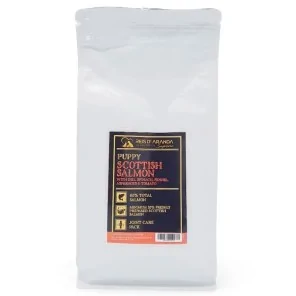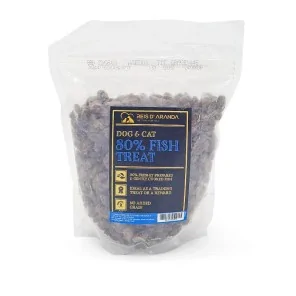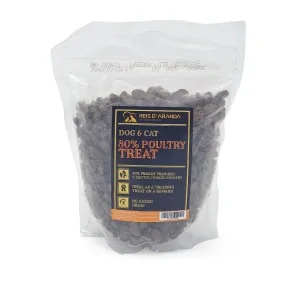Its name says it all: the Vienna blue rabbit comes from Austria. Not only is it beautiful with its shiny blue-grey...
THE GROENENDAEL BELGIAN SHEPHERD
INTRODUCTION
The Belgian Shepherd Groenendael is the second most popular of the four Belgian Shepherds in existence, probably due to his beautiful black coat. He is undoubtedly a spectacular dog, a vision of elegance and distinction. But this dog breed is not only a beautiful dog to watch moving majestically, but the Groenendael stands out for its great intelligence, nerve and great predisposition for work.
THE HISTORY OF THE GROENENDAEL BELGIAN SHEPHERD DOG
The common ancestor of a number of Group 1 breeds, similar in build to the Belgian Shepherd, may well be said to derive from a medium-sized, medium-bodied, medium-sized dog, with a lively temperament and easy movement, resistance to fatigue and excellent adaptation to any environment and task, from time immemorial. This dog, which some authors call the ‘Continental Shepherd’, serves to link this group of breeds which practically took on a name and surname in the form of a standard in Europe at the end of the last century, but also to establish the differences, not only anatomical. Our Breed in its current conception, began its journey in Belgium on September 29th, 1891, with the creation of the ‘Club du Chien de Berger Belge’. At that time, in continental dog shows, a clear majority of dogs of Anglophone breeds were seen. Perhaps spurred on by this circumstance, a group of Belgian enthusiasts led by Professor Adolphe Reul decided to create a specific Club, with the aim of establishing a breed of shepherd dogs indigenous to the country. On the initiative of Professor Reul, the Club agreed to organise a meeting, in order to obtain first hand the necessary information and to lay the foundations for the creation of the Belgian Shepherd Dog. On Sunday, 15 November 1891, at the Veterinary Faculty of Cureghem, on the outskirts of Brussels, and with the support of the entire state veterinary profession, 117 dogs were presented, previously pre-selected from the breeders of the Brabant region and other neighbouring regions. This figure, which seems exceptional even today, highlights the convening power of illustrious names in Belgian dog breeding, such as the aforementioned Professor Reul, Louis Huyghebaert and Louis Van der Snickt. The abundance of subjects observed confirms the existence of similar types, with appreciable differences in size and special emphasis on the texture, length and colour of the coat. The first standard drawn up by Professor Reul and approved by the Club on April 3, 1892, is practically identical to the present one, defining the appearance, aptitudes and most of the physical characteristics of our dogs. It establishes the division into 3 varieties, based on the length and texture of the coat: Longhair, Wirehair and Shorthair (satin, in the original standard). The colours range from black to grey, passing through the whole range of browns.
Already at that first meeting in 1891 the outstanding figure of a rather square built dog type emerged, with a moderately long black coat, a white star on the chest and triangular, small, well set and always straight ears. It can be said that this type is embodied in a dog that the breeder M. Beernaerts observes working with the cattle and who stands out for his cunning, intelligence, vigilant attitude and tireless temperament, acquires Picard and takes him to his property of ‘Uccle’, registering him from this moment on as PICARD d'Uccle. Shortly afterwards, he was handed over to the restorer Nicolas Rose and became the father of the long-haired varieties. In fact, the origin of these ‘black dogs’ was founded in the area around the forest of Soignes where the ‘Chateau de Groenendael’, managed by Nicolas Rose, was located, in consanguineous unions of Picard's offspring, almost always with the intervention of the bitch Petite. This bitch, who lived in a farmhouse in Hannonsart, near the forest of Soignes, is described as a rather small, very intelligent, rustic bitch with a black coat, although somewhat ‘burnt’ due to her life in the open air and her continuous work with the cattle. This did not prevent her, once acquired by Nicolas Rose, from being the winner of the 1st prize for long hair at the second meeting of the Faculty of Cureghem, held on May 1, 1892. At the turn of the century, three kennels were created to continue Nicolas Rose's work: ‘Mascottes’, ‘L'Enfer’ and ‘M'nu Bos’. If his work was fundamental in the establishment of the breed, it was even more so for allowing, after the First World War, the creation of two of the most important kennels in its evolution and development: ‘Mont Sara’ and especially ‘L'Infernal’ by Mr. Beaudoux. In 1924 began the career of Mme Jacqueline Aubry, the most influential personality in the development of the variety, with her kennel ‘Chemin des Dames’ whose champions and breeders of the first order are innumerable. From this moment the weight of the variety began to be carried in France with the appearance of new kennels and above all the ‘Club Fraçaise du Chien de Berger Belge’, a fundamental pillar in the development and popularity of the breed at world level, whose system of selection advocated since the end of 1950 has been taken over by the French Kennel Club and transferred to all the Breed Clubs affiliated to it.
WHAT IS THE GROENENDAEL BELGIAN SHEPHERD DOG LIKE?
GENERAL APPEARANCE: The Belgian Shepherd Dog is mediolinear, harmoniously proportioned, at the same time elegant and powerful, of medium size and lean, strong musculature. His body is square in shape. It is rustic, accustomed to life in the open air, and its constitution allows it to resist the atmospheric variations so frequent in the Belgian climate. By the harmony of its forms and the haughty bearing of the head, the Belgian Shepherd Dog should denote that elegant robustness which has become the attribute of selected representatives of a working breed. The Belgian Shepherd Dog will be judged at rest in its natural positions, without physical contact with the presenter.
IMPORTANT PROPORTIONS: His body forms a square. The chest slopes down to the level of the elbows. The length of the muzzle is equal to or slightly more than half the length of the head.
HEAD : Well moulded, lean and long, but not excessively so. The length of the skull and muzzle are almost equal; at most the muzzle is a little longer, which gives a touch of finish to the whole. Skull of medium width, in proportion to the length of the head. The forehead is flat rather than rounded and the midline is not very pronounced. Seen in profile, the skull is parallel to the imaginary line extending the muzzle.
NOSE: Black in colour. The nostrils are wide open.
EYES: Medium sized, neither prominent nor sunken. They are slightly almond-shaped and brownish in colour, preferably dark and the rims of the eyelids are black. The gaze is direct, alert, alert and inquisitive.
EARS: Of distinctly triangular appearance. Stiff and erect, set on high and of proportionate length. The pinna is well rounded at the base.
BITE / TEETH: The jaws show strong, white teeth; they are strongly and regularly set in well developed jaws. The articulation is scissor-like, i.e. the incisors of the upper jaw should slide over the incisors of the lower jaw, slightly overlapping but not touching them. The overlapping of the incisors is acceptable, as it is this type of ‘pincer’ teeth which is preferred by sheep and cattle drivers.
NECK: Slightly elongated, splayed, muscular, without dewlap. It widens progressively in the region of the shoulders.
BODY: Vigorous, but without a heavy appearance. In males, its length measured from the point of the shoulder to the point of the buttock is approximately equal to the height at the withers. In bitches this length may be somewhat greater.
FOREQUARTERS: Solid bone structure, fine and strong musculature. The shoulder blades are long, oblique and flattened. Together with the humerus they form an angle which allows easy movement of the elbows. Upper arm should move in the direction directly parallel to the longitudinal axis of the body. The forearms are long and well muscled. Pasterns strong and short, lean, without signs of rickets.
HINDQUARTERS: Strong, but without signs of heaviness. They move in the same plane as the forelegs. The hindquarters are perpendicular to the ground. The thighs are broad and very muscular. The knee is approximately perpendicular to the haunch. The legs are long, broad, muscular and angulated in the region of the hock, but not too much. The hocks are close to the ground, broad and muscular. Seen from behind, they are perfectly parallel. Metatarsus solid and short.
FEET: Slightly oval; toes curved and close together. The pads are thick and elastic. The nails are dark and strong.
TAIL: Well set on. Strong at root, of medium length. At rest, the dog keeps it hanging down with the tip slightly bent backwards. When the dog is in action, the tail is raised, accentuating the curve of the tip, but at no time should it deviate, nor take the shape of a hook.
GAIT / MOVEMENT : Loose, agile and covering as much ground as possible. The Belgian Shepherd Dog seems tireless, as he is always on the move. Due to his petulant temperament, he has a marked tendency to move more in circles than in a straight line.
HAIR: As the length, direction and appearance of the coat are varied, this point has been adopted as a criterion to distinguish the different varieties of the breed. In all varieties the coat should always be abundant, close, of good texture, forming together with the undercoat, which is woolly, an excellent protective coat.
COLOUR: black bay.
SIZE: 62 cm in males and 55 cm in bitches. Tolerance is 2 cm less and 4 cm more.
CARE OF THE GROENENDAEL BELGIAN SHEPHERD DOG
Like all Belgian Shepherds, the Groenendael is an active dog that requires plenty of mental and physical exercise every day, otherwise he can become destructive and direct his frustration and stress towards other animals or family members; he should be brushed every week with an extra long barbed card and bathed every month and a half to two months (especially during moulting season). In terms of nutrition, these dogs require essential fatty oils for a healthy coat and skin, so fish-based products are a good choice, as well as high quality proteins such as Angus beef-based feeds.
The most common diseases in this breed are:
- HIP DISPLASIA: This is a very common disease in German Shepherds. It is characterised by inflammation and pain in the joint between the hip and the femur of the dog. It is a congenital hereditary disease.
- ELBOW DYSPLASIA: Canine elbow dysplasia is a disease consisting of multiple abnormalities of the elbow joint. The elbow joint is a complex joint made up of three bones (the radius, ulna and humerus). If these three bones do not fit together perfectly as a result of growth disturbances, an abnormal distribution of weight on different areas of the joint occurs, causing pain, lameness and leading to the development of arthritis. Elbow dysplasia is a disease comprising several disorders grouped into medial space disease (fragmentation of the coronoid process, osteochondrosis, elbow incongruity and elbow anomalies) and nonunion of the anconeal process. The cause of canine elbow dysplasia is unclear. There are several theories as to the exact cause of the disease, including genetics', cartilage growth defects, trauma, diet and other issues. The most common suspicion is that it is a multifactorial disease causing growth disturbances.
- CATARACTS: Cataracts in dogs are a loss of transparency of the lens that helps them to see better, i.e. loss of the crystalline lens. Due to the breakage of the crystalline tissue, opacity is produced in the eyes and causes blurred vision. It is essential to treat them as soon as possible because the more time passes, the more dense they become and the more likely it is that the canines will have a total loss of vision without the ability to recover it. There are several causes of cataract disease in dogs. One of them can be by nature or by the dog's old age, as we have already mentioned above, due to the rupture of the crystalline lens. But there are also other causes of cataracts in dogs, such as trauma, injury, inflammation of the eye or diabetes. However, the most common cause, or the one most commonly diagnosed, is hereditary cataracts. Age is not a determining factor in this cause as they can appear when the animal is young.
- CORNEAL DISTROPHY: Corneal dystrophy is an inherited genetic disease affecting the cornea, the transparent circular wall at the front of the eye. It usually affects the central part of the cornea in both eyes without causing eye inflammation and progresses slowly.
- GLAUCOMA: This hereditary disease is detected at 2 to 3 years of age. The German Shepherd has pain in his eye and rubs it with his paw or against a surface. The intraocular pressure increases and causes the pain. A dilated, opaque pupil is a clear symptom of the disease.
THE GROENENDAEL BELGIAN SHEPHERD AS A PET
The Groenendael is a loving and devoted companion who wants to be involved in everything. His natural protective instincts will come out if and when needed. They will protect your home and family, so it is not advisable to encourage their protective instincts when they are young, as they may start protecting you in ‘normal’ situations. Early and thorough socialisation is a must with this breed.
CONCLUSION
The Belgian Shepherd Groenendael is an active and intelligent breed ideal for families who like sport or working with dogs, they need good socialisation and are suitable for living with children as long as they respect them and all their physical and psychological needs are met.
Leave a comment
Log in to post comments
















